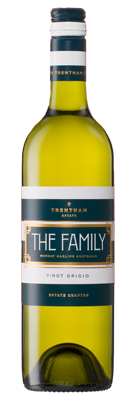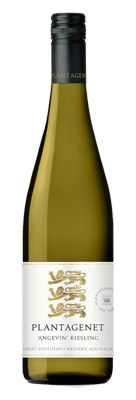Filter by
- 92pt Chardonnay from WA’s remote Great Southern, of “power & presence” (Halliday)$35.00 RRPfrom $29.99 when you mix 12+
- Dont miss this Gold-winning, 91pt luxurious Bordeaux white rarity.$32.00 RRPfrom $22.99 when you mix 12+
- 95pt, great Value Clare Riesling classic – a raft of high scores from very reliable Pikes.$28.00 RRPfrom $25.99 when you mix 12+
- "Small in price but big in Grigio personality...91pts. Great Value" (Halliday)$18.00 RRPfrom $17.99 when you mix 12+
- Don't miss this Great Value "seriously good" (Wine Orbit) Sauvignon with scores of 95 and 92pts.$30.00 RRPfrom $25.99 when you mix 12+
- Lively 93pt Single Vineyard Riesling from remote Great Southern.$34.00 RRPfrom $28.99 when you mix 12+
- Dazzlingly crisp, ocean-fresh Sauvignon from Mount Benson on South Australia's rugged south coast.$22.00 RRPfrom $15.99 when you mix 12+
- Refresh yourself with this bright, citrus-charged Clare Valley Semillon.$24.00 RRPfrom $17.99 when you mix 12+
- Hunter Valley Chardonnay from Tyrrell's with Gold, 95pts "Tremendous Value" (Halliday).$40.00 RRPfrom $38.99 when you mix 12+
- Floral 93pt Eden Valley Riesling which "lingers beautifully and is excellent value" (Winepilot)$30.00 RRPfrom $23.99 when you mix 12+
- A 93pt, great Value Yarra Valley beauty "... generous yet nicely structured..." (Halliday).$24.95 RRPfrom $22.99 when you mix 12+
- Gold-medal Fiano from a secret vineyard source and winemaker that must remain ‘masked’.$22.00 RRPfrom $18.99 when you mix 12+
- From a small family Champagne house run by two brothers, this is a superb fizz with great finesse.$90.00 RRPfrom $85.99 when you mix 12+
- A vibrant, classy Chardonnay with lovely fruit and harmonious oak from WA's Willow Bridge.$35.00 RRPfrom $31.99 when you mix 12+
- Vibrant, nicely balanced Adelaide Hills Sauvignon Blanc – great to share this Summer.$25.00 RRPfrom $19.99 when you mix 12+
- Brilliant, bright Sauvignon Blanc from South Australia’s fertile Limestone Coast.$22.00 RRPfrom $16.99 when you mix 12+
- Fresh Adelaide Hills Chardonnay from cricket legend Ricky Ponting and winemaker Ben Riggs.$25.00 RRPfrom $24.99 when you mix 12+
- Gold-winning Vermentino (again) from the always dynamic Zonte’s team.$28.00 RRPfrom $24.99 when you mix 12+
- New release of a Aussie white offering refreshing fruit & effortless enjoyment from Sam Trimboli.$18.00 RRPfrom $11.99 when you mix 12+
- This rare Garnacha Blanca from Navarra is like sunshine in a glass!$22.00 RRPfrom $14.99 when you mix 12+
- Refresh yourself thoroughly with a beautifully poised Victorian Riesling.$25.00 RRPfrom $21.99 when you mix 12+
- A refreshing and beautifully balanced Semillon from premium Limestone Coast vineyards.$21.00 RRPfrom $17.99 when you mix 12+
- A 94pt"Riesling of substance and balance". The Adelaide Hills are alive with the taste of Riesling!$33.00 RRPfrom $28.99 when you mix 12+
- "Fabulously aromatic" (Wine Orbit) Margaret River Sauvignon with several high point scores.$32.00 RRPfrom $27.99 when you mix 12+
Wine FAQs
What is dry white wine?
Dry white wine is a style of wine that contains very little or no residual sugar, meaning it doesn’t taste sweet.
Popular dry white wines include Chardonnay, Sauvignon Blanc, Pinot Grigio, Chenin Blanc and Riesling.
Dry white wines come in various styles, from light and crisp to full-bodied. They often have fruit flavours ranging from citrus and orchard fruits (like apple and pear) in cooler climate wines to tropical fruits (like mango and pineapple) in warmer climate wines.
Other common flavours in dry white wines include floral, herbal and mineral notes. Some dry white wines may develop additional flavours when aged in oak barrels.
Dry white wines are often characterised by high acidity, giving them a refreshing taste, which makes them food-friendly. They pair well with many foods, including chicken, seafood, salads and light pasta dishes.
How is dry white wine made?
Making dry white wine starts in the same way as with any white wine. Once the wine grapes have been harvested, they’re crushed, and the juice is separated from the skins and seeds.
Under controlled temperatures, yeast is added to the grape juice and the mixture is left to ferment. The yeast consumes the natural sugars in the grape juice, converting them into alcohol. For dry white wines, little to no residual sugar remains after fermentation. Wines with slight residual sugar of roughly 4-12 grams per litre are typically classified as ‘off-dry’.
Once the fermentation process is complete, a maturation stage can begin, which involves the wine being stored in either steel tanks or oak casks for a period ranging from a few months to years. Steel tanks offer limited oxygen contact, helping to maintain the wine’s freshness. Oak casks are porous and allow in a small amount of oxygen, so the wine can develop secondary flavours and textures, enhancing its complexity.
What are the most popular dry white wines?
Many delicious dry white wines are made in Australia and around the world. Here are some of the most popular wines:
- Sauvignon Blanc is a light-to-medium-bodied wine best known for its zippy acidity and floral, zesty citrus, green and tropical fruit flavours – look for green apple, pear and passion fruit notes. The wines are also known for their distinctive herbaceous aroma.
- Chardonnay is a medium-to-full-bodied white wine originating from the Burgundy region of France. It can be made in various styles depending on the region and winemaking techniques. Its flavours range from zesty citrus with a distinct minerality to rich tropical fruits with a creamy texture. Sweeter aromas of vanilla and butter can develop if the wine is aged in oak barrels. Some of the best Australian Chardonnay wines hail from Hunter Valley, Adelaide Hills, Yarra Valley and Margaret River.
- Chenin Blanc dry white wines are medium-bodied and known for their lean style and high acidity. They have tart flavours of pear, quince and ginger and aromas of green apple and chamomile.
- Albariño is a dry, aromatic white wine with high acidity and citrus and stone fruit flavours, often with a subtle saline note. It’s native to Spain and Portugal, where it’s known as Alvarinho.
- Pinot Grigio is a light-to-medium-bodied white wine with refreshing pear and citrus flavours and delicate blossom aromas, including jasmine and honeysuckle.
- Grüner Veltliner is an Austrian grape variety that has found a home in the cool-climate region of Adelaide Hills in South Australia. It produces dry, highly acidic white wines with citrus, nectarine and white pepper flavours, with hints of green herbs.
- Riesling can be made in dry to lusciously sweet styles. Dry Rieslings, particularly those from regions like Clare Valley and Eden Valley in Australia or Alsace in France, are known for their high acidity, floral aroma, and flavours of lime, mineral and green apple.
What foods pair well with dry white wine?
Thanks to their high acidity and broad spectrum of flavours, dry white wine is very versatile when paired with food. Try these delicious ideas:
- Light pasta dishes – Dry whites like Pinot Grigio pair well with pasta, especially those with cream sauces, as their acidity cuts through any heaviness.
- Poultry and pork – Chardonnay, especially those with a bit of oak ageing, can stand up to rich, flavourful dishes such as roast chicken, turkey or pork.
- Seafood – Light, crisp dry white wines such as Sauvignon Blanc or Pinot Grigio pair well with delicate seafood dishes, including raw oysters, shrimp cocktail or a white fish ceviche.
- Vegetarian dishes – The high acidity and citrus qualities in dry white wines work wonderfully with salads, grilled vegetables or vegetable-based dishes. Many dry white wines have complementary herbaceous, citrus, or green fruit flavours.
Feel free to experiment and find your own favourite combinations!
How to serve dry white wine
Dry white wines reveal their full flavours when served cool but not overly chilled. Typically, they are best served between 7-13°C.
Serve these wines in a standard white wine glass. These glasses have a slender bowl, which limits the wine’s oxygen exposure. They also feature high sides with a narrow rim, designed to concentrate the wine’s aromas. Remember to hold the glass by the stem, so the heat from your hands doesn’t warm the wine.
How long does dry white wine last after opening?
Once opened, dry white wine typically stays fresh for about 3 to 5 days. The key to making it last is to limit the wine’s exposure to air once the bottle is opened. Here are a few tips to help extend its freshness:
- Seal the bottle tightly after each pour. A wine stopper helps create a firm seal.
- After opening, store the bottle upright. This minimises the surface area of wine exposed to oxygen, slowing the oxidation process.
- Keep the bottle in the fridge, but remember to take it out about 15-30 minutes before drinking so it can reach the correct serving temperature.



























